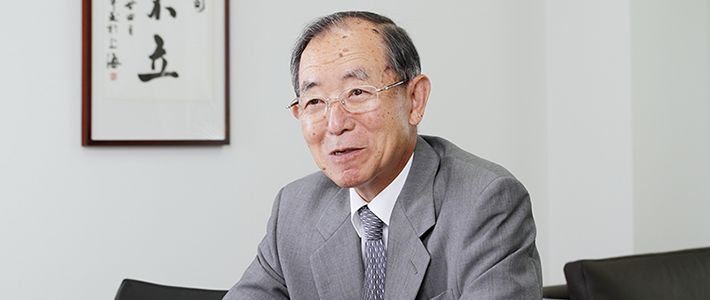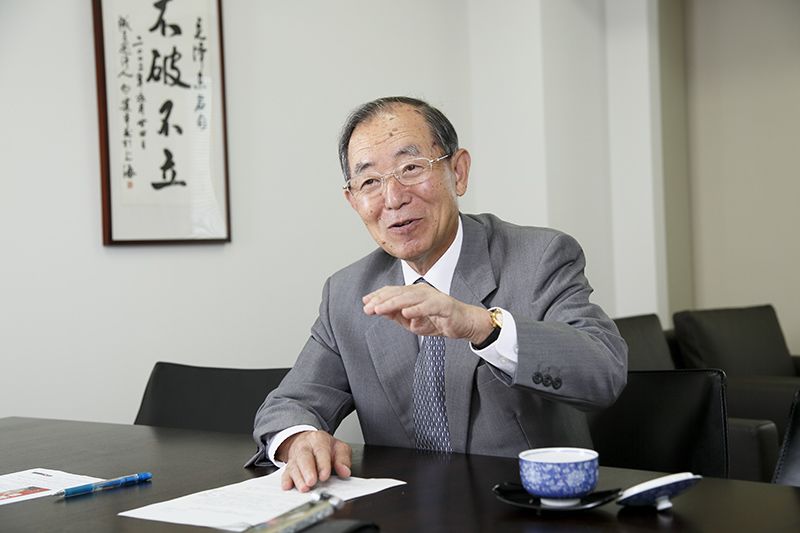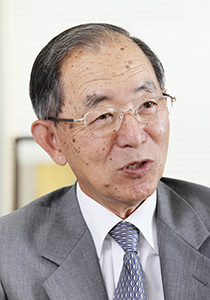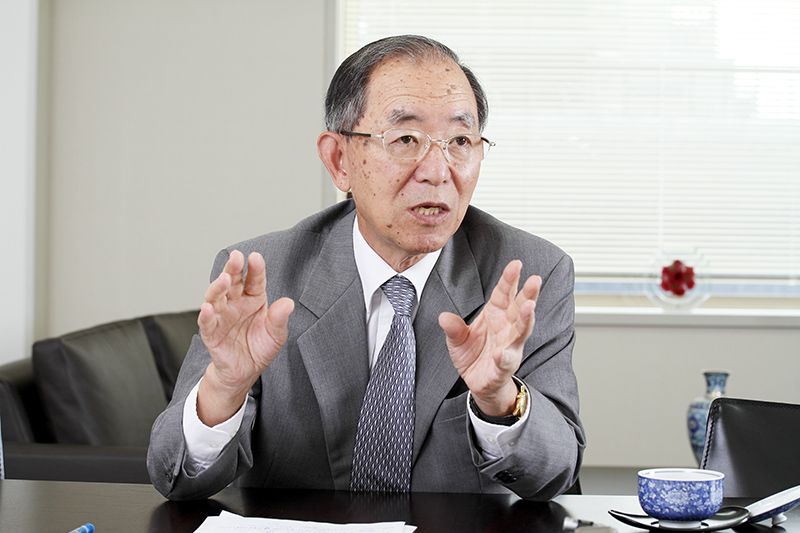
Japan Must Engage China, Freeze the Senkaku Debate
Politics Economy- English
- 日本語
- 简体字
- 繁體字
- Français
- Español
- العربية
- Русский
China’s Economy: From Boom to Stability?
INTERVIEWER After many years at high economic growth levels, China’s expansion has begun to cool down, and President Xi Jinping faces many issues. What is your take on China’s economic situation?
NIWA UICHIRŌ Take a look back at the course of Japan’s postwar development, and it’s easy enough to understand the movement of China’s economy. From 1955 to 1973, Japan’s economy grew at an average clip of 9 to 10 percent per year. Then, from 1973 to 1990, Japan was in a phase of stable medium-term growth. During this period, despite economic growth being only half of what it had been in the preceding years, Japan’s economy actually tripled in size. At the same time, the currency strengthened from 360 to 120 yen to the dollar. That further tripled Japan’s power.
Similarly, now China has been enjoying double digit growth for twenty years since the start of the country’s economic opening and reforms. It’s natural that China’s GDP will have ballooned as well, and that growth rates will begin to slow. I think the country is on the verge of a second phase in its sudden rise under capitalism; it’s entering its own phase of stable growth over the middle term. Even if growth rates fall to half of what they had been, with an economy as massive as China’s, 7 percent growth is still formidable. China’s economy is starting to enter that stable phase now.
INTERVIEWER You’re not especially worried about the future outlook?
NIWA In terms of its economy, China is travelling the same path that postwar Japan did. Within the country, labor strikes are on the rise and wages are rising by 10 to 20 percent. That rise is boosting domestic demand, leading to a relative decline in exports. That’s the economic environment that China is looking at in the next twenty years.
I expect that the rate of urban migration will rise as well. There are forecasts of around 14 million people per year migrating internally into Chinese cities. Those people will need apartments, and infrastructure like roads, gas and water lines, and sewer systems. These aren’t the hallmarks of a growing bubble. This remarkable demand will continue in the future, and that alone is enough to drive economic expansion.
A Market Japan Can’t Ignore
INTERVIEWER How are Japanese companies approaching business with China?
 NIWA Right now, there are around 22,000 Japanese companies making their way into the Chinese market, and between 120,000 and 130,000 Japanese and Nikkei Chinese residing in China. Over 10 million Chinese people work for Japanese companies today. Within ten years, China is expected to become the world’s largest economy and to have the world’s largest consumer market. In most developed countries, the consumer market accounts for 60 to 70 percent of GDP, but that share still hovers between 40 and 50 percent in China. That means that the Chinese consumer market still has room to grow by another 25 or 30 points. We should think of this as an enormous market shared between Japan and China.
NIWA Right now, there are around 22,000 Japanese companies making their way into the Chinese market, and between 120,000 and 130,000 Japanese and Nikkei Chinese residing in China. Over 10 million Chinese people work for Japanese companies today. Within ten years, China is expected to become the world’s largest economy and to have the world’s largest consumer market. In most developed countries, the consumer market accounts for 60 to 70 percent of GDP, but that share still hovers between 40 and 50 percent in China. That means that the Chinese consumer market still has room to grow by another 25 or 30 points. We should think of this as an enormous market shared between Japan and China.
Maybe there are people out there who think it’s a disgrace that the Chinese economy has surpassed Japan’s, but it’s a mistake to think that way. That sort of pettiness will only drag Japan’s economy down. Japan needs to learn to work with and capitalize on the growing Chinese market.
INTERVIEWER Japan formally entered negotiations on the Trans-Pacific Partnership, or TPP, in July 2013. How will this decision affect the Japan-China relationship?
NIWA In essence, I think TPP is meaningless without both China and Japan as members. What would it even mean to build a regional trade pact without China, which is on pace to supplant America as the world’s largest economy? For China, however, there’s no need to enter TPP as things stand today. I think there is a perspective that joining the agreement won’t mean anything to the countries that join if China doesn’t join as well.
INTERVIEWER What do you think of discussing a free-trade agreement among Japan, China, and South Korea?
NIWA So long as strife between Japan and China delays negotiations on any such agreement, more and more countries will continue beating Japan to the punch by signing FTAs. Negotiations between Korea and China are already underway. Even absent a full Japan-China FTA, agreements on protecting investments and intellectual property rights are needed sooner rather than later. When I call for Japan to build toward future economic cooperation, these two economic agreements are what I have in mind.
While Japan continues to struggle with China over the Senkaku Islands, the Americans, Germans, and Koreans are overtaking Japan in the Chinese market. Keidanren and Japan’s industrial and financial sectors should be pressing the Japanese government on the necessity of reaching these agreements.
Focus on Exchange, Improving Relations
INTERVIEWER The Senkaku issue has strained the relationship between Japan and China. What can the two countries do to make a breakthrough?
NIWA If you look at the bigger picture, the answer is exceedingly clear. Looking back at the thousands of years of history between Japan and China, and looking forward to the rest of the twenty-first century, there’s really only one solution: a summit between our two leaders, as soon as possible. And what they need to do is not rush to resolve the Senkaku problem completely, but to put a freeze on it. I don’t know when it will be time to “thaw” the problem again, but in the meantime, we should keep it frozen. Until that time comes, there are certain things that need to happen between Japan and China: economic exchange, youth exchange, and regional- and community-level exchanges. All of these exchanges should be accomplished as soon as possible. Japan should be thinking about what it can do to realize these goals.
INTERVIEWER The Japanese government’s official position is that “there is no territorial dispute; the Senkaku Islands are an inherent part of the territory of Japan, in light of both the historical record and international law.”
NIWA Personally, my view is that even if there is no territorial dispute, there is a point of contention. In 1996, Foreign Minister Ikeda Yukihiko declared that the Senkaku Islands were “an inherent part of Japanese territory,” and since then the government has reiterated that position. Some hold that the Senkaku Islands issue was put on the back-burner, so to speak, at a 1972 meeting of Japanese Prime Minister Tanaka Kakuei and Chinese Premier Zhou Enlai, but no formal record of that position was made. Questions persist as to whether there ever was such a policy, but that argument isn’t productive, and there doesn’t seem to be any prospect of resolving it.
For over forty years, Japan’s government has denied that there was an agreement to put the Senkaku issue on the back-burner, and for the last seventeen years it has asserted that the Senkakus are an inherent part of the territory of Japan. At this point, the government can’t suddenly say there was a pact to put off the issue for later, and it’s profoundly unlikely that we’ll see a reversal of the official position on the islands as inherent Japanese territory. If Japan were to backtrack on these positions, it would only undermine its reliability in the world’s eyes. China surely understands this. At the same time, there’s no way that China will accept Japan’s assertion, and it’s hard to imagine that China will withdraw its own claim that the two countries agreed to deal with this issue at a later date.
That is to say, neither country’s government is able to change its position on the problem now. So, further debate on the issue won’t lead to a resolution. What’s more important to discuss is what can be done to get the two countries working together amicably. That’s why I say we should think about putting a freeze on the issue. If there comes a day when the political situation improves, then that will be the time to talk about thawing it out again.
Three Summit Opportunities
INTERVIEWER That’s a moderate and practical approach.
NIWA Prime Minster Abe has said to China, “the door is open.” Forty years ago (1972), the first joint political statement from the Tanaka-Zhou summit normalized bilateral diplomatic relations, which had long been severed. Of course, both sides have their own aims and their own public images to consider, so when it comes to addressing the Senkaku issue, Abe is not saying anything more than that the possibility for dialogue is there.
The Xi Jinping administration will be in place for the next ten years, so both leaders need to adopt a long view in charting how Japan and China will get along in the years ahead. Where could a summit take place? I think a third country where the two leaders can meet on balanced terms is the most practical. All the two leaders would need to do is agree to freeze the Senkaku issue for the time being and make that agreement public. I think seeing their respective leaders making an effort to talk things through would begin to change how the peoples of Japan and China feel.
The G20 Leaders’ Summit will be held in St. Petersburg in September; there is an APEC [Asia Pacific Economic Cooperation] Leaders’ Meeting in Indonesia in October; and there is a possibility of another trilateral meeting this year between the leaders of Japan, China, and South Korea. That’s three opportunities for a face-to-face meeting before the end of the year. Setting aside the smaller details, Prime Minister Abe and President Xi would only need 10 or 15 minutes to get together and agree to put a freeze on territorial issues and to focus on efforts like improving economic and youth exchange. Both President Xi and Premier Li Keqiang have worked on youth exchange in the past and both understand its importance.
The Korea Relationship a Bigger Cause for Concern
NIWA The ongoing Senkaku Islands situation continues to bring news stories about patrol ships and territorial incursions, but I think in the broader perspective, the Japan-China relationship will not get worse than it already is—and cannot be permitted to deteriorate further. I believe that leaders from both governments agree on that much.
Lately, it’s the Japan-Korea relationship that seems to have no ground for reconciliation, more so than the Japan-China relationship. The roots of popular antipathy between Japan and Korea may run even deeper than the clashes between Japan and China, and that worries me. As our relationship with China improves, it might be able to influence the relationship with Korea and foster some sort of dialogue between the two countries, perhaps encouraging a similar freezing of the Takeshima and comfort women issues.
(Based on an August 1, 2013, interview conducted in Japanese in Tokyo. Interview by Harada Kazuyoshi. Photographs by Yamada Shinji.)
China TPP economy Senkaku Islands Japan-China Xi Jinping international relations Niwa Uichiro

